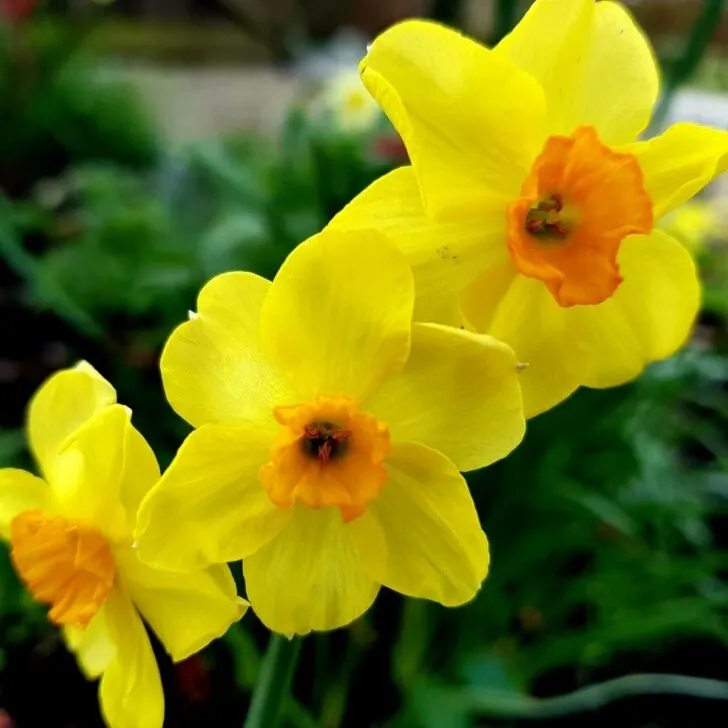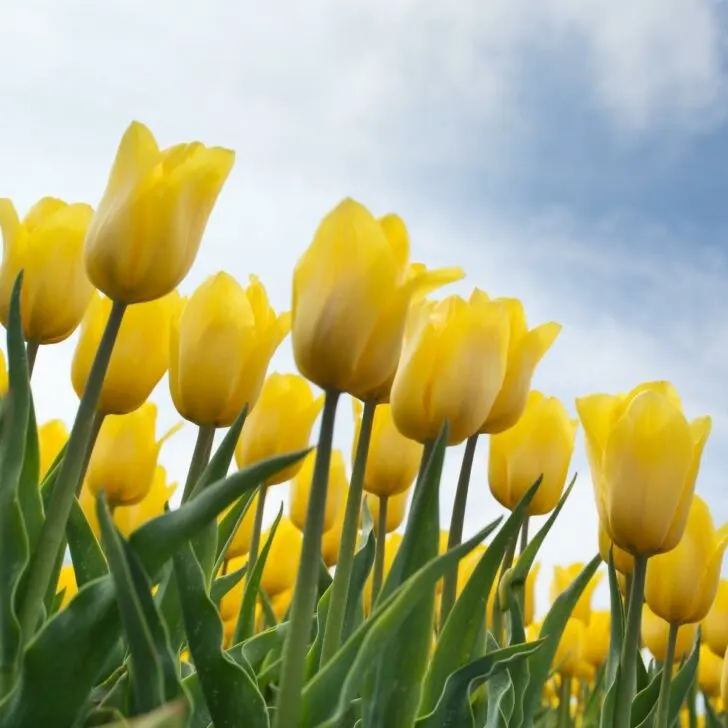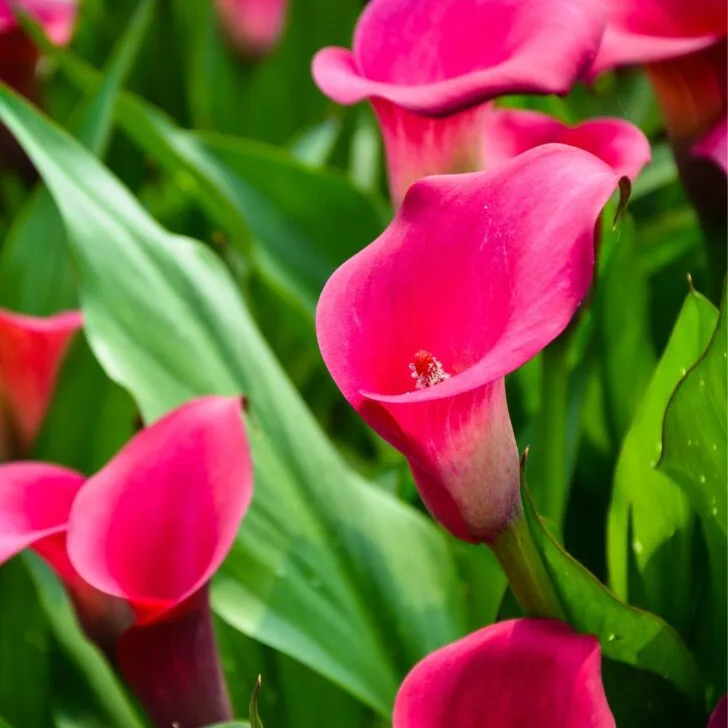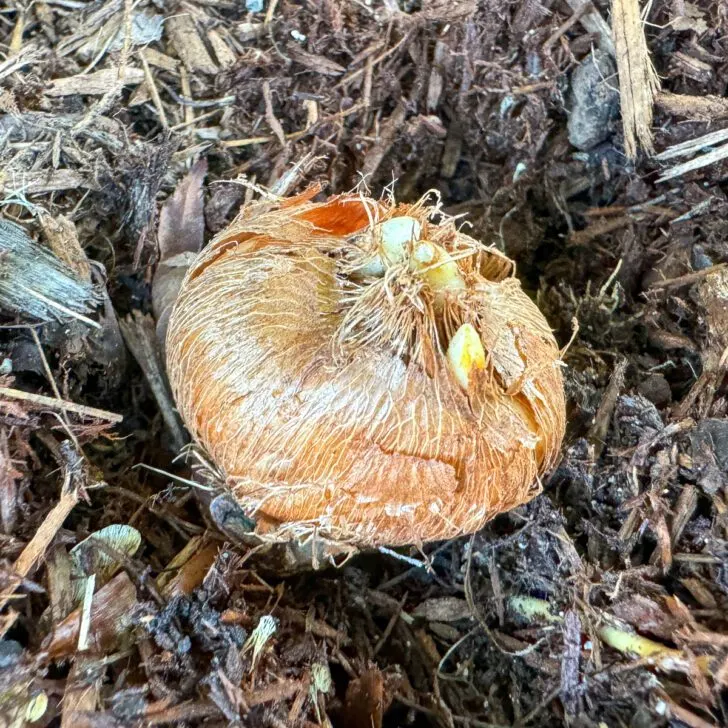Learn how to plant allium bulbs, including the proper depth, spacing and light levels, so you can enjoy a beautiful display in the spring!

Allium bulbs have a lot to offer you and your garden. While these plants are best known for the familiar edible types like onions, garlic, shallots, and chives, many delightful, spring-blooming ornamental allium species are available to spice up your garden landscape.
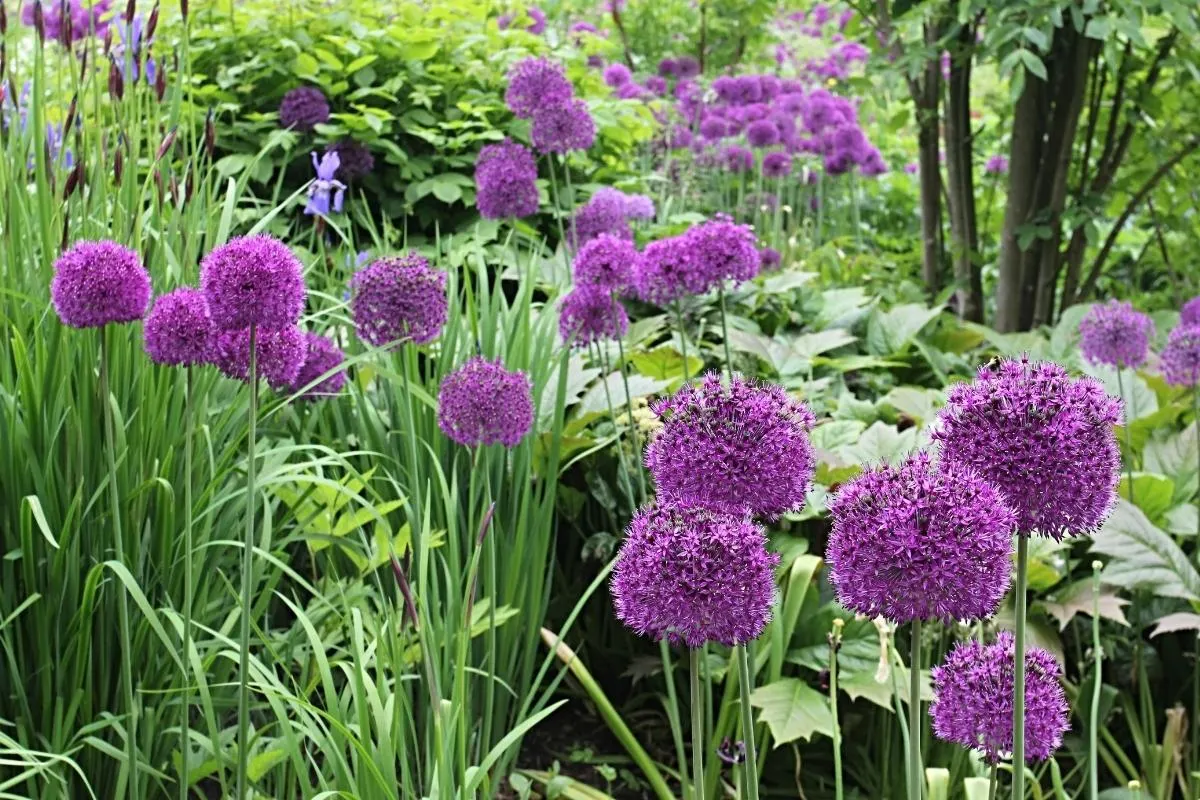
The non-edible bulbs of ornamental varieties produce attractive, colorful, and sometimes enormous globes of flowerets that rise above the ground on slender stalks to delight the eye.
This post contains affiliate links for your convenience. Purchases made through these links may earn me a small commission at no additional cost to you.
Alliums at a glance
| Category | Information | Tips and Notes |
|---|---|---|
| Best Time to Plant | Fall, 4-6 weeks before the first frost. | This gives the bulbs enough time to root before winter. |
| Soil Type | Well-drained, moderately fertile soil. | You can improve soil by adding compost. Drainage is key. |
| Soil pH | 6.0-7.0 | Test your soil's pH and amend as needed. |
| Sunlight | Full sun to partial shade. | At least 6 hours of direct sunlight is ideal. |
| Planting Depth | 3-4 times the height of the bulb. | Generally, 3-8 inches deep depending on the bulb size. |
| Spacing | 6-8 inches apart. | Proper spacing helps with good air circulation and growth. |
| Watering | Consistently moist but not soggy. | Water thoroughly after planting and regularly thereafter. |
| Fertilizing | Use a balanced fertilizer. | Apply at planting and again in spring. |
| Pests and Diseases | Relatively pest-resistant. | Onion fly and thrips may occur but are generally not a big issue. |
| Flowering Time | Late spring to early summer. | This varies slightly by variety. |
| Hardiness Zones | 4-9 | Make sure to check the specific zone for your allium variety. |
| Mulching | 2-3 inches of organic mulch. | Helps with moisture retention and weed control. |
| Bloom Colors | Purple, blue, pink, and white. | Depends on the specific allium variety. |
| Toxicity | Toxic to cats and dogs. | Keep pets away from the plants. |
Where to get allium bulbs
You can find a wide range of allium bulbs in garden stores, online, and mail-order catalogs. In addition, once you have a patch of alliums growing, you can dig up new bulbs as they multiply from the old plants. It is best to dig up offshoot bulbs in late summer or fall after the plants finish flowering.
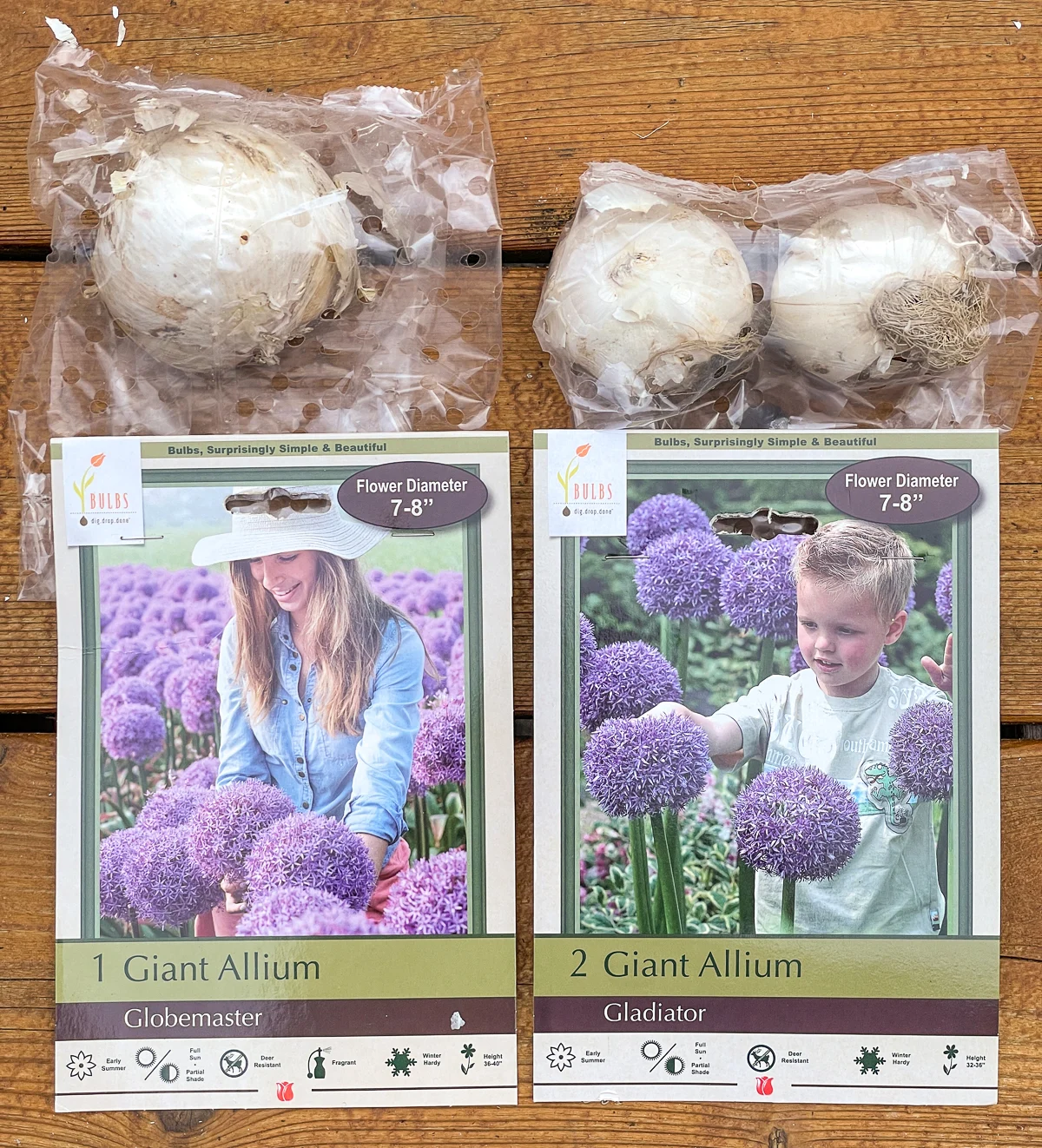
If you buy bulbs at a nursery or online, unpack them immediately when you get them home. If you can't plant them directly, store the bulbs in a cool, dry area until you are ready to put them in the soil.
Where to plant allium bulbs
While allium bulbs are not fussy plants, they do need plenty of sun exposure and well-drained soil to thrive. So choose a spot that gets at least six hours of direct sunlight and where the soil quickly drains away excess water.
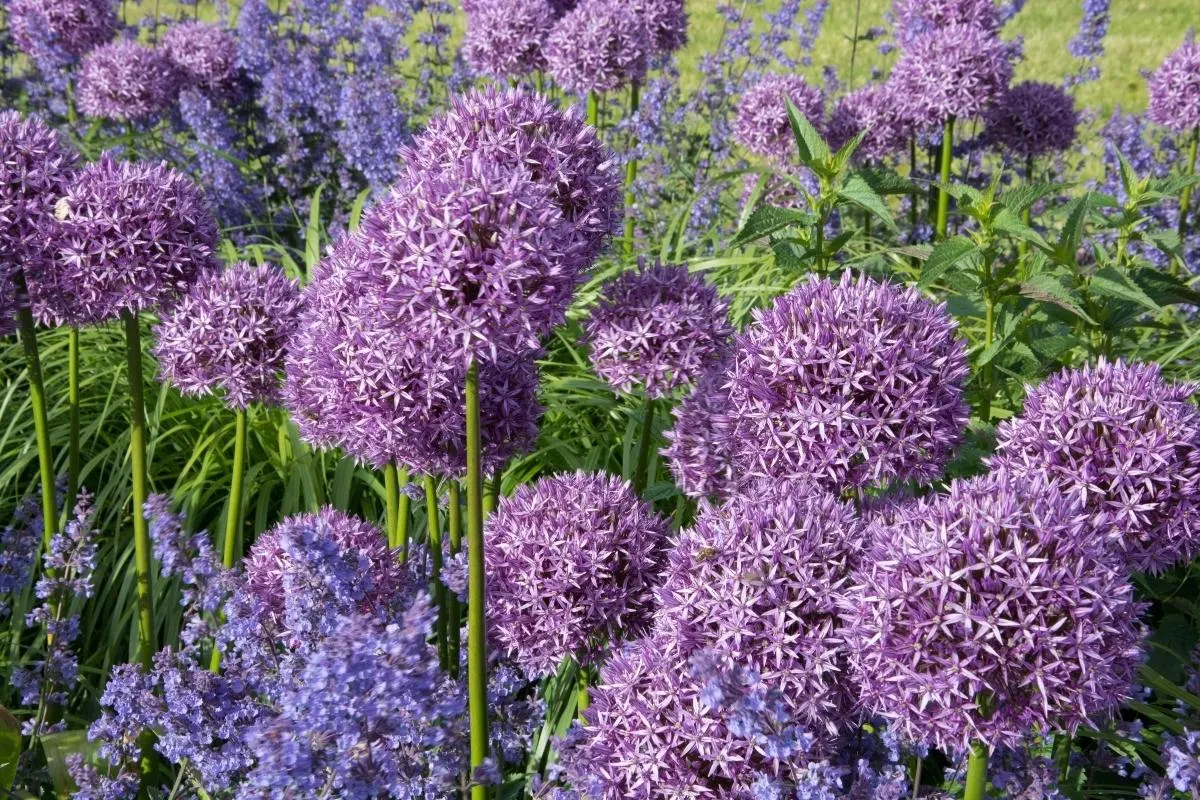
If the soil is heavy or prone to standing water, find another location, or amend the ground with lots of compost to improve drainage before you plant.
When to plant allium bulbs
The best time to plant alliums is in the fall when the soil temperature reaches 60°F or less at midday. By planting them in the fall before the first hard frost, you provide the bulbs with the low temperatures and soil moisture they need to develop a healthy root system before they send up shoots and produce flowers in spring and early summer.
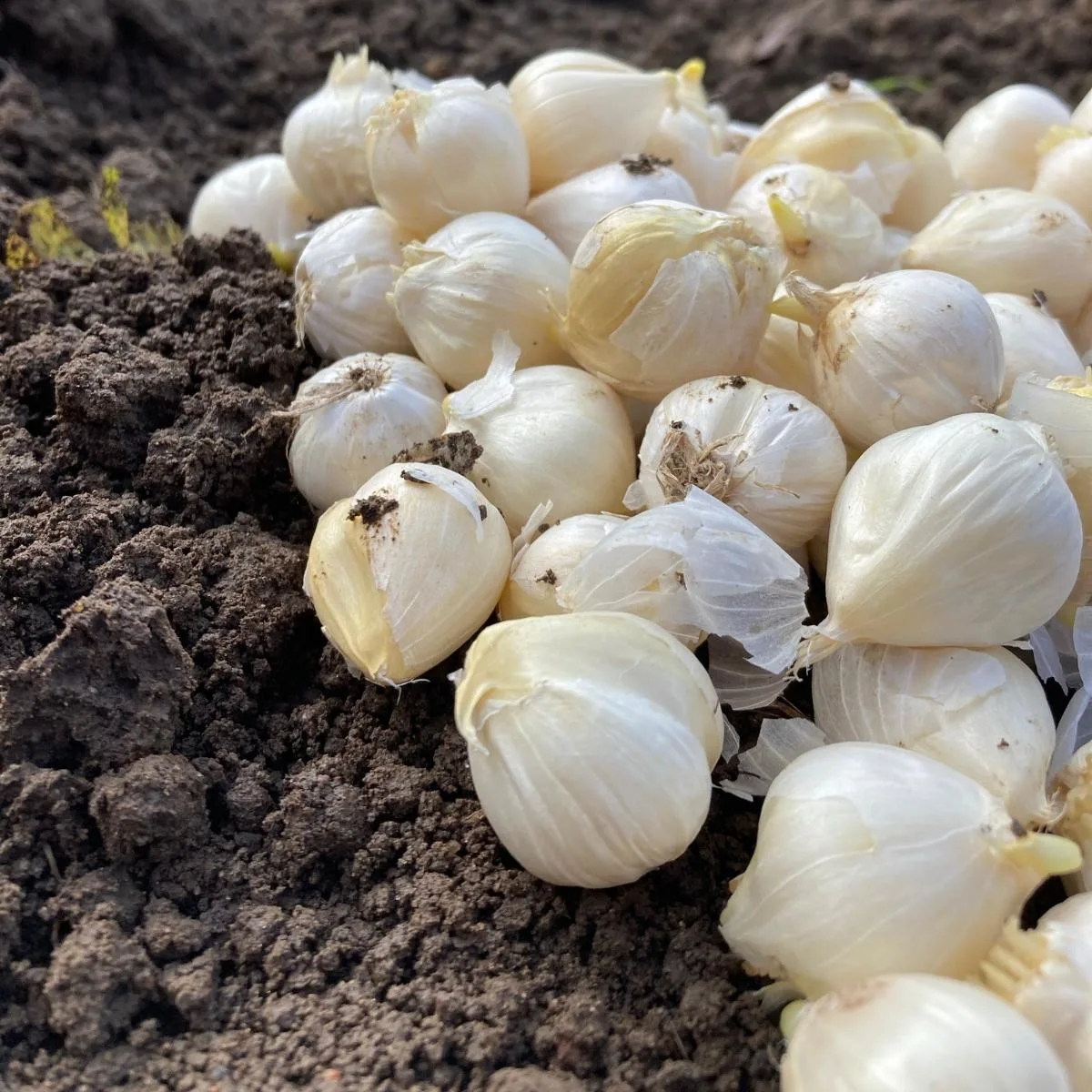
In colder areas, the optimum time for planting alliums is in September and October. However, if you live in a warmer climate, you can plant them in October and November.
But fall is a busy time in the garden, and maybe you just realized you didn't get those bulbs into the ground yet. How late can you plant allium bulbs? If you can still dig a hole in the soil, you can plant them!
Once the ground is frozen, you should wait until it thaws before planting. If you don't get your bulbs into the ground in the fall, you can wait until spring. You probably won't get blooms that year, but they'll be ready and waiting next spring. But don't save them until the following fall or they may not bloom at all!
How deep to plant allium bulbs
The best depth for planting allium bulbs depends on the size of the bulb. A good rule of thumb is to plant bulbs twice as deep as their size. For smaller bulbs, dig down about 4 inches. Plant larger varieties, such as this giant Globemaster Allium, go a bit deeper, between 6 and 8 inches.
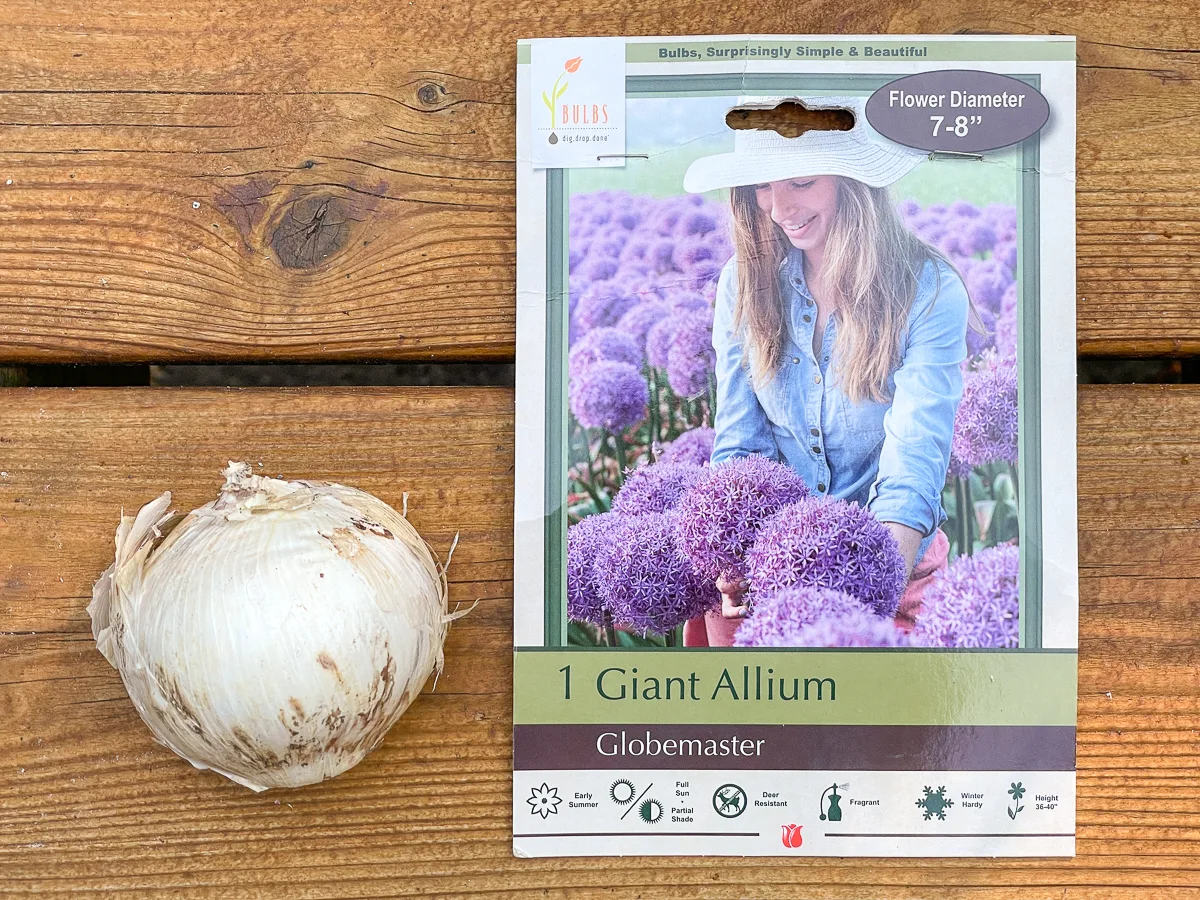
Planting at the correct depth is crucial so the growing bulbs won't get too hot or too cold as the seasons change. Also, when you set the bulbs into the soil, be sure the pointy end is facing upward because this is where the sprout emerges while the roots grow from the rounder end of the bulb.
I like to use a hand shovel to gauge the depth of my hole. The metal part is about 6 inches long, so it's easy to see when I've reached the proper size for my bulb.
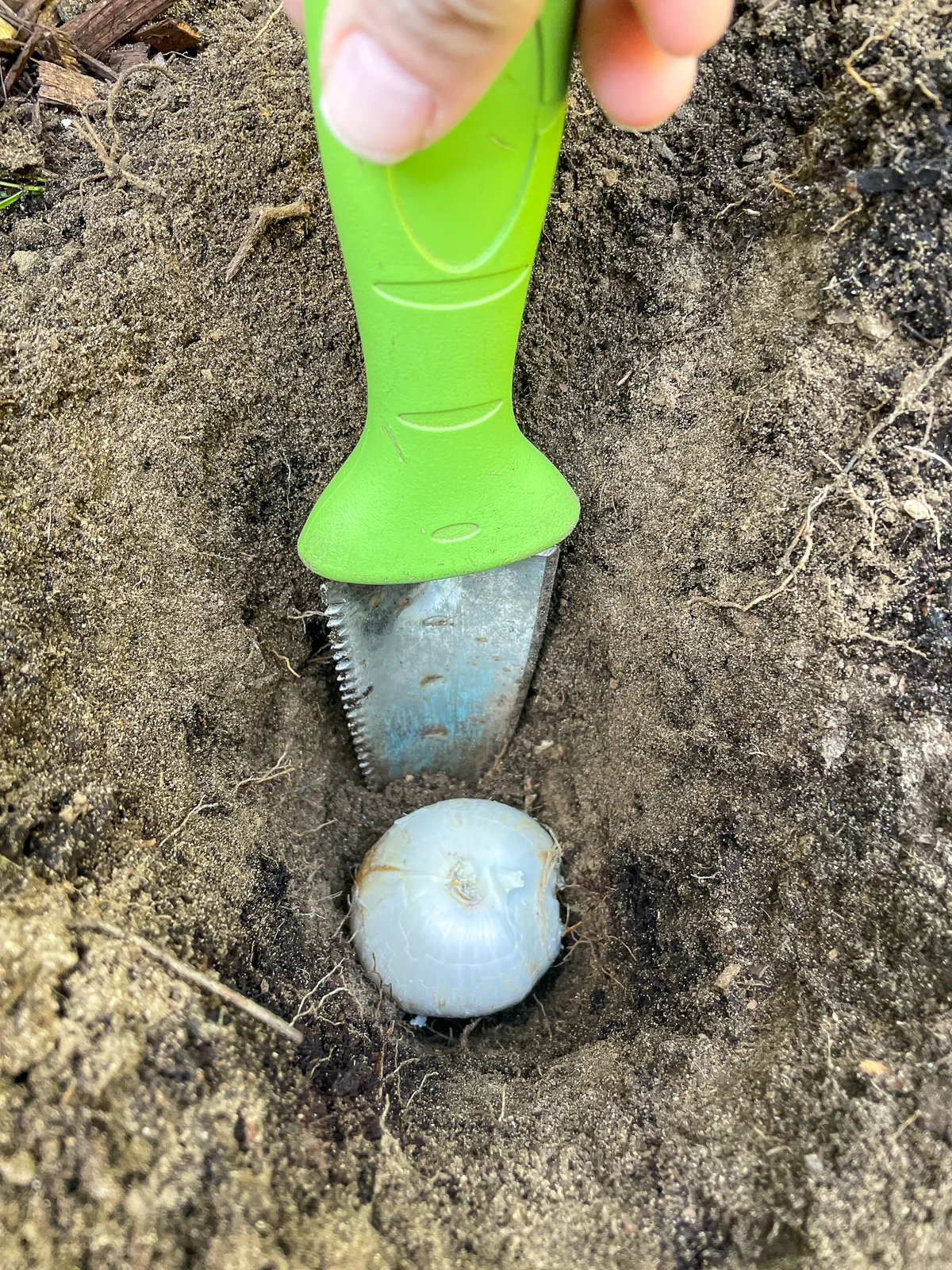
How far apart to plant allium bulbs
If you are planting allium bulbs in the ground, put them at least 6 to 8 inches apart, or three bulbs per square foot. Keep in mind that some varieties grow quite tall, so consider planting the bulbs behind other perennials rather than right up front.
If you grow them in containers, you can put them closer together. However, when planting in containers, keep some space between the bulbs so they do not touch one another.
Caring for allium bulbs after planting
Once your allium bulbs are in the ground, water them thoroughly to help compact the soil and to initiate root growth. After that, allium bulbs need minimal watering. However, if there is no rain for a week or more, give the bulbs light watering so they do not dry out.
I like to spread a layer of mulch over the bulbs after planting in the fall. It provides the bulbs with additional protection in the cold winter months, and prevents weeds from popping up in the spring. However, don't mound it up too high, or the Alliums will have trouble breaking through to the sunlight.
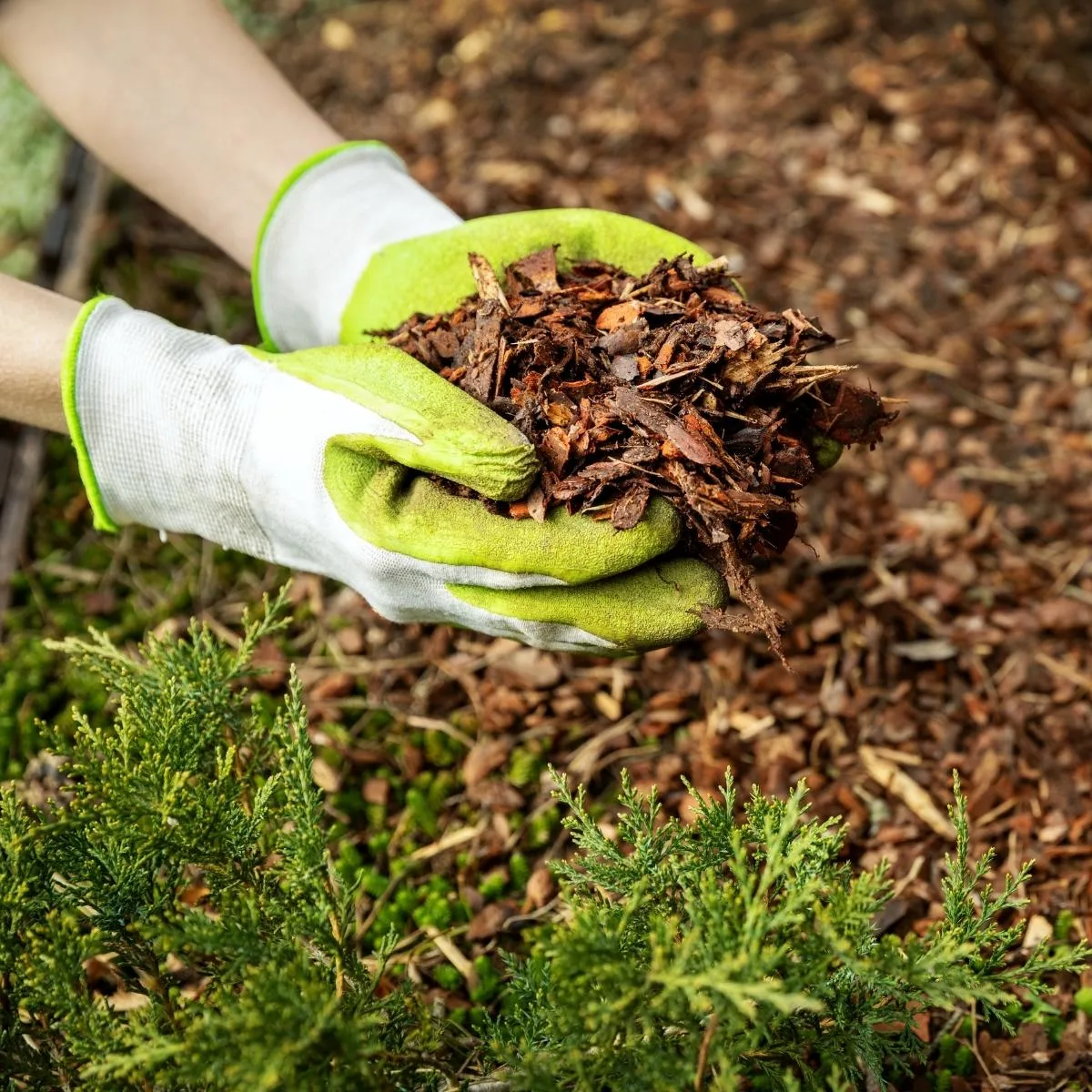
For the best color, maintain a pH level of 6-7 in your soil. Use a mild fertilizer such as lime, bone meal or bulb booster to supplement your soil if necessary.
What do allium shoots look like?
The first time I saw allium shoots popping up in my garden in spring, I thought they were really strange looking tulips! The long foliage grows quickly and flops out to the sides, revealing a thick, straight stem with a bulge that looks like a tulip at the top.
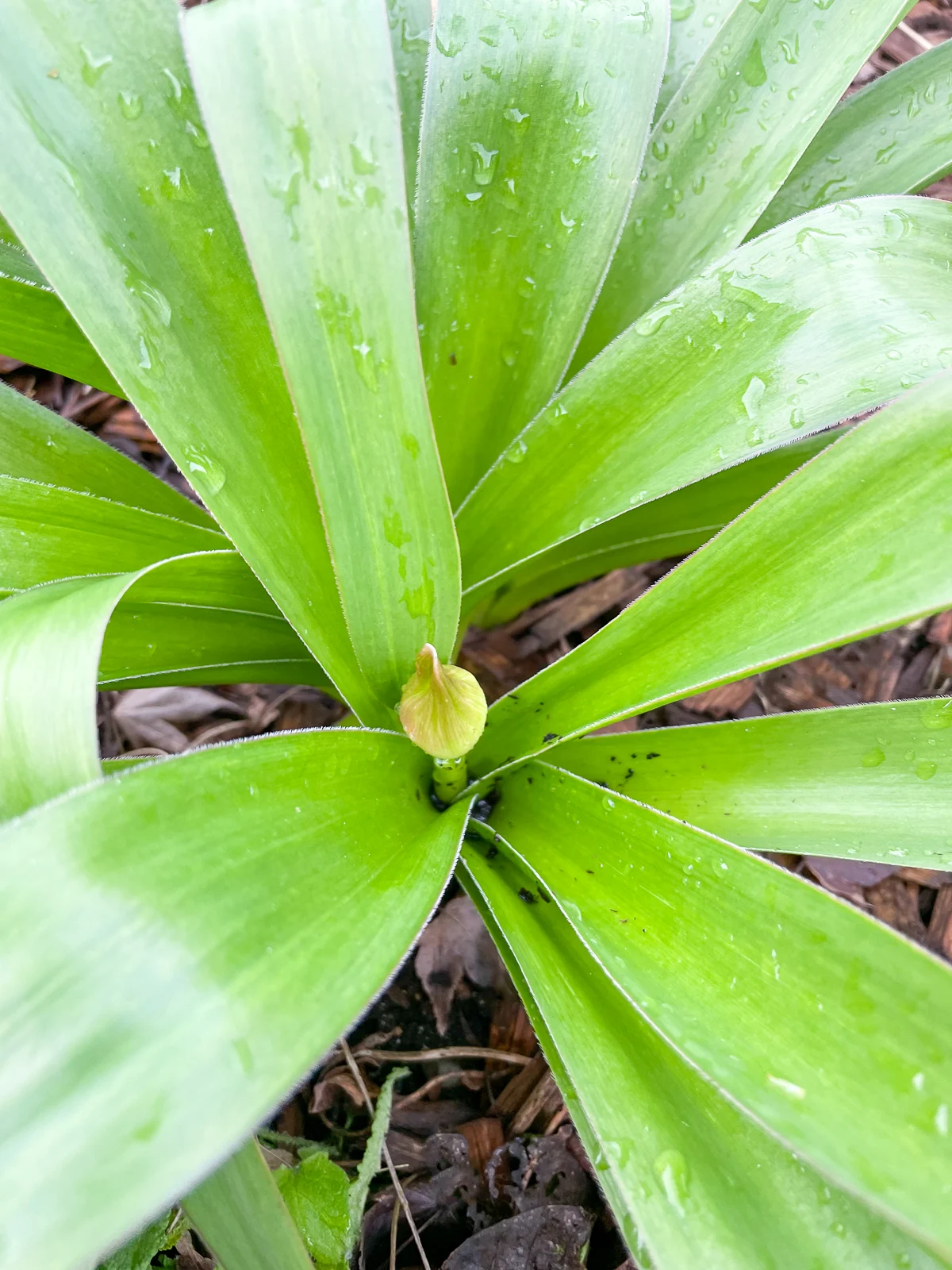
Once the foliage reaches full size, the bulb puts all of its energy into pushing up that long stem. This is the same allium shoot two weeks later!
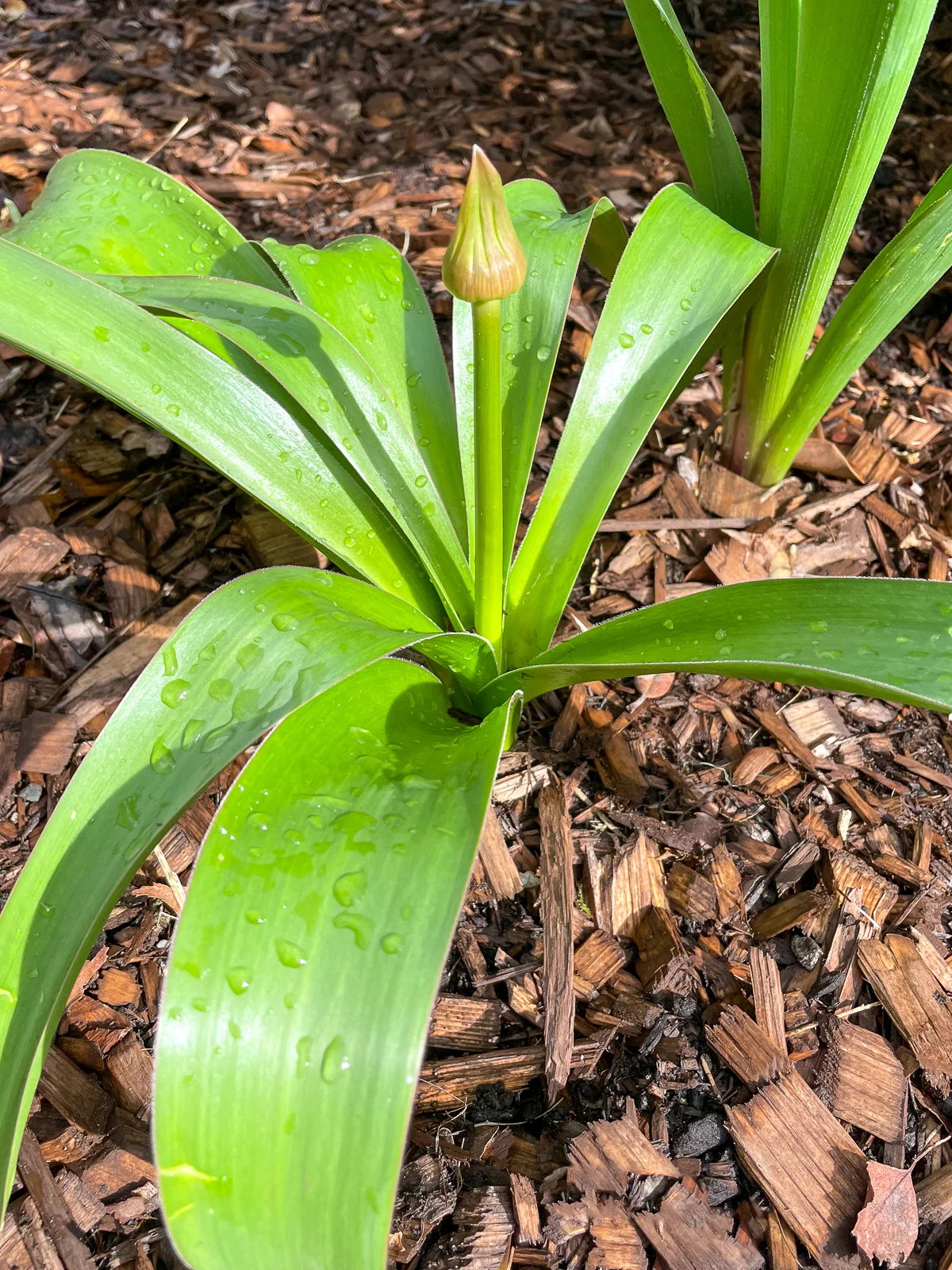
What to do with alliums after flowering
Once the plants have flowered, you can dead-head the flowers, but don't cut down the foliage until it is completely dried. Leaving the foliage on allows the plants to continue photosynthesizing and nourishes the bulbs underground so they will be vigorous when they sprout the following season.

If you want to move your allium bulbs to a new location, wait until all the foliage dies back first. This ensures that all the energy the plant needs to sprout next year has been stored away in the bulb, and you can safely transplant it to another spot in the garden.
Frequently Asked Questions about Allium Bulbs
Are allium bulbs perennials?
Yes, alliums are perennials, which means that once you plant them, they will sprout and bloom from the same bulb over and over for many seasons.
Do allium bulbs multiply?
Yes, these plants produce smaller new bulbs under the soil as they grow, so they will multiply and spread on their own or provide you with new bulbs to dig up and plant in other locations.
Can you plant allium bulbs in spring?
Yes, you can plant alliums in the spring. However, if you do, the bulbs are not likely to produce flowers until the following spring. For this reason, most people plant alliums in the fall to enjoy the flowers at the start of the next growing season.
Can you plant allium bulbs in containers?
Yes. Alliums can grow in containers. You can plant the bulbs closer together than in the ground, but always leave at least a few inches between the bulbs. You can also combine alliums with daffodil and tulip bulbs for a spectacular container garden display of spring color.
If you plant alliums in a container, keep in mind that above-ground planting does not protect the bulbs from temperature fluctuations as well as the ground does. Therefore, if you live in an area with cold winters, you might want to bring the containers indoors (like a garage, basement or shed) to protect them during the coldest months.

